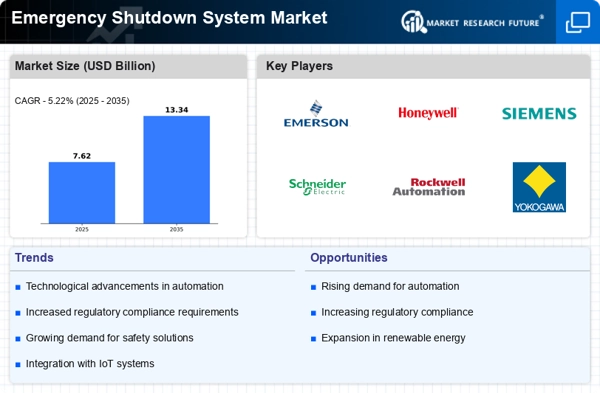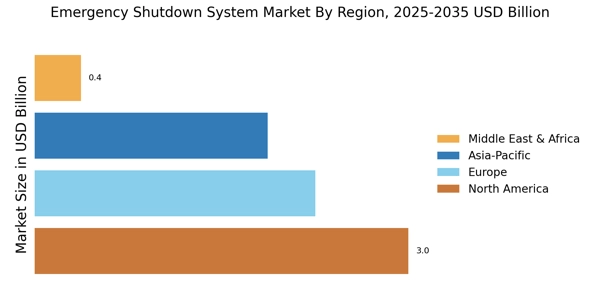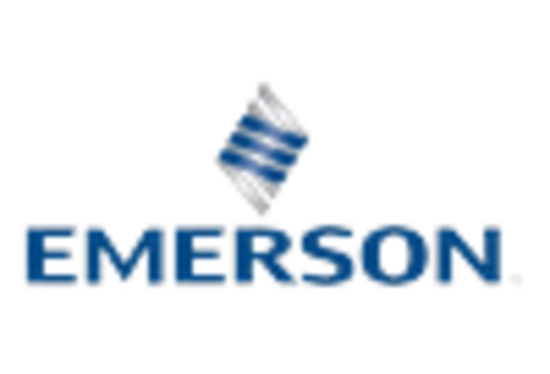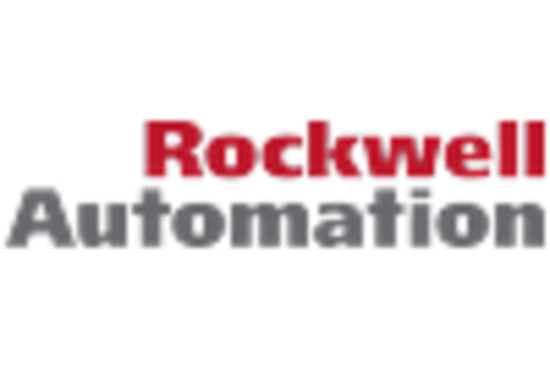Regulatory Compliance
Regulatory compliance remains a critical driver in the Emergency Shutdown System Market. Governments and regulatory bodies are increasingly mandating stringent safety standards across various sectors, including oil and gas, chemical processing, and manufacturing. Compliance with these regulations necessitates the implementation of robust emergency shutdown systems to mitigate risks associated with hazardous operations. The market is projected to witness a compound annual growth rate of approximately 6%, largely fueled by the need for compliance with evolving safety regulations. Companies that prioritize adherence to these standards are likely to gain a competitive edge, further propelling market growth.
Focus on Safety Culture
A growing emphasis on safety culture within organizations is significantly influencing the Emergency Shutdown System Market. Companies are increasingly recognizing the importance of fostering a safety-oriented environment, which includes investing in advanced emergency shutdown systems. This cultural shift is driven by the need to protect employees, assets, and the environment from potential hazards. Research indicates that organizations with a strong safety culture experience up to 50% fewer incidents. As a result, the demand for effective emergency shutdown systems is expected to rise, as businesses seek to enhance their safety protocols and minimize risks.
Technological Advancements
The Emergency Shutdown System Market is experiencing a surge in technological advancements, particularly in automation and digitalization. Innovations such as advanced sensors, artificial intelligence, and machine learning are enhancing the efficiency and reliability of emergency shutdown systems. These technologies enable real-time monitoring and predictive maintenance, which can significantly reduce the risk of accidents. According to recent data, the integration of smart technologies in emergency systems is projected to increase system effectiveness by up to 30%. As industries strive for operational excellence, the demand for sophisticated emergency shutdown systems is likely to grow, driving market expansion.
Increased Industrialization
The ongoing trend of increased industrialization is a notable driver for the Emergency Shutdown System Market. As industries expand and new facilities are established, the need for reliable emergency shutdown systems becomes paramount. This is particularly evident in sectors such as petrochemicals, pharmaceuticals, and energy, where the potential for catastrophic failures necessitates robust safety measures. Market analysis suggests that the industrial sector's growth could lead to a demand increase for emergency shutdown systems by approximately 8% over the next five years. This trend underscores the critical role of these systems in safeguarding operations and ensuring compliance with safety standards.
Rising Awareness of Environmental Impact
Rising awareness of environmental impact is increasingly shaping the Emergency Shutdown System Market. As stakeholders become more conscious of the ecological consequences of industrial operations, there is a growing demand for systems that can prevent environmental disasters. Emergency shutdown systems play a vital role in mitigating risks associated with spills, leaks, and other hazardous events. Data indicates that industries investing in advanced emergency shutdown technologies can reduce environmental incidents by up to 40%. This heightened focus on sustainability and environmental protection is likely to drive market growth, as companies seek to align their operations with global sustainability goals.

















Leave a Comment